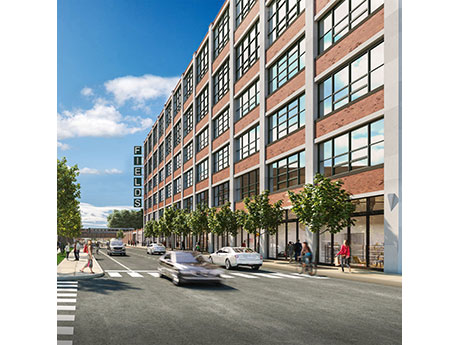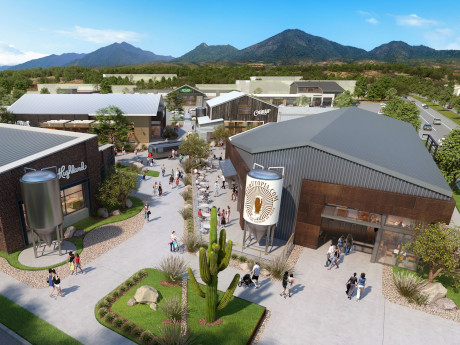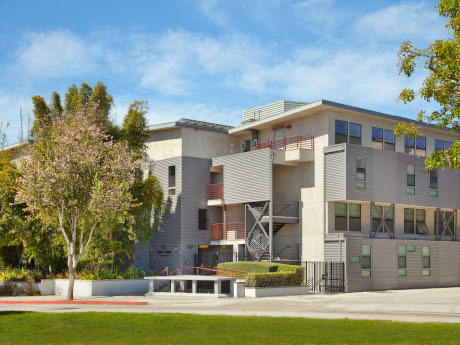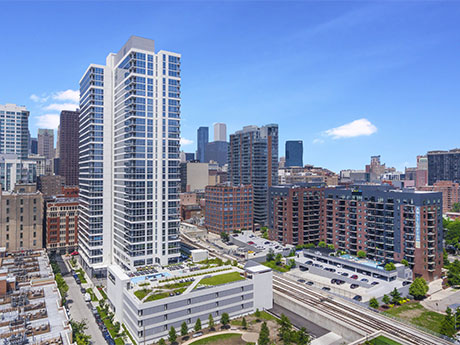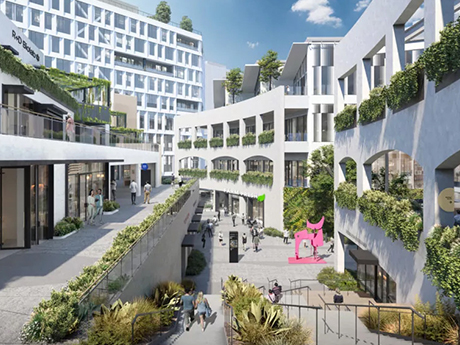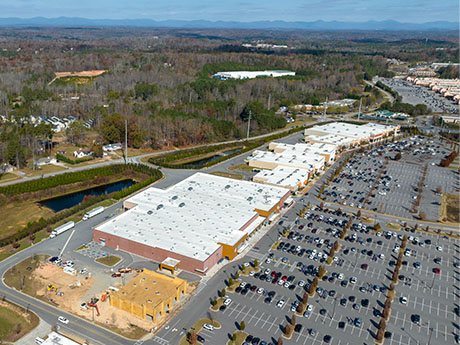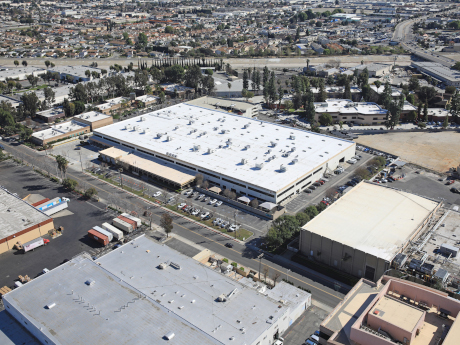— By Dan Palmeri, Senior Vice President, CBRE — As Las Vegas reinvents itself as the sports and entertainment capital of the world — while still maintaining the fun factor it has always been known for — the corporate world continues to look at Southern Nevada as a legitimate place to do business. The city saw a record number of Class A deliveries in 2022 and has shown no signs of slowing down through 2023. This is a reflection of the demand for new, functional and relevant office space. Like most markets, location and quality of buildings are the main drivers for employers as they focus on employee happiness and retention. As Las Vegas has grown from a small desert town in the ‘70s and ‘80s with 505,000 residents in 1983, to a market of more than 2.3 million residents today, the natural geographical growth outward has hit a point where the city has reached the Valley’s boundaries in all directions. What was once a five- to 10-minute commute to the center of town has now become a 20- to 30-minute commute for the mass of suburban dwellers. This has organically led to a focus on a 25-mile stretch from …
Market Reports
By Jaime Bertsche and Lara Keene, Mid-America Real Estate Positive signs for retail real estate abound across many Chicago neighborhoods and high streets, with physical stores demonstrating their necessity coming out of the pandemic. Both of us live and work in the city of Chicago, so it’s particularly heartening to see favorable trends and leasing activity throughout our city of neighborhoods. It may surprise some to know that Chicago has been No. 1 in corporate expansions for the last nine years, with 441 major business expansions and relocations in 2021. Chicago employment has grown by 75,000 since the start of 2022 and ranks third in the U.S., according to World Business Chicago. Google is investing in the city and purchased the 17-story, 1.2 million-square-foot Thompson Center in the Loop with plans to use the building as a second Chicago headquarters. Kellogg announced it will move a spinoff company to Chicago for a new headquarters in the city. Some of the economic changes we saw in the market in the second half of last year affected retailers’ expansion plans. Inflation and interest rates challenged retailers to maintain their customer base, keep their own costs in line, and adapt to higher …
Ryan Desmond, partner, Western Retail Advisors in Phoenix Metro Phoenix’s population grew faster than any other major U.S. city between 2010 and 2020. By 2021, the Valley’s 1.48 percent population growth continued to far exceed the country’s .01 percent growth — the slowest annual growth rate in our nation’s history. For a community that has historically been criticized as being over-retailed on a per-capita basis, this has injected tremendous strength into the local retail market. Today, Phoenix ranks as a hotspot among U.S. cities for retail absorption. According to CoStar, Phoenix had absorbed 4.1 million square feet of retail space year over year — the strongest absorption since the start of the Great Recession — by the start of the second quarter in 2023. This reduced the market’s overall vacancy rate to 5 percent. This is impressive, but it doesn’t reflect the increased gap between demand for Class A product and all other retail classes. Much like the flight to quality happening in the office sector, tenants looking for retail space in metro Phoenix want excellence: high-traffic locations in a growth submarket with compelling demographics. As a result, we have seen more metro Phoenix Class A retail properties reach full …
Five blocks doesn’t seem that far. It’s about a quarter of a mile, or 560 steps. But, it’s just a hair past convenient for today’s office workers. Now more than ever, tenants are seeking an office experience that is dynamic and energized with amenities. They want great options for coffee, lunch or happy hour that are steps away, not blocks. If it’s not right outside the office, it’s not close enough. In Atlanta, the Midtown submarket is still where the action is. In 2022, Midtown had 775,652 square feet of positive absorption, which was the highest in the metro according to Cushman & Wakefield. In keeping with the flight-to-quality trend, Atlanta leasing activity last quarter was dominated by Class A product, which accounted for 75.6 percent of all transactions. Most of this activity occurred in Midtown. With a Walk Score of 87, Midtown is Atlanta’s most walkable submarket. But even there, it’s the vertically integrated office developments that bring a new layer of urban density that are rising above the rest. Not only are they seeing more leasing demand, but they are also experiencing a constant hum of activity and energy due to immediate access to great retail and restaurants. …
— By Kimberly Stepp, Principal, Stepp Commercial Group — Los Angeles’ Westside apartment market is poised to see a robust pipeline of transactions in 2023. Long-time owners have been increasingly seeking to trade into out-of-state assets, while 1031 investors or those looking to pay all cash seek to take advantage of opportunities in a high interest rate environment. Last year, Stepp Commercial Group saw a significant number of transactions with LA-area sellers who were frustrated with rent control and other problematic apartment legislation. They were looking to trade into states like Arizona, Florida and Texas because they provide a stronger ROI over the long-term and offer fewer landlord restrictions. We see that trend continuing into 2023 as owners want to enjoy a passive income as they achieve their individual investment goals and objectives. Additionally, while Measure ULA (“the mansion tax”) went into effect on April 1 — and impacts only homes and apartment complexes sold within the City of Los Angeles at $5 million or more — the overall sentiment has been sour from owners throughout the Greater LA area. They are justifiably concerned that similar legislation will soon be coming to their city, on top of other landlord-unfriendly restrictions …
By Mark Stern, JLL Chicago’s multifamily sector currently enjoys strong market fundamentals highlighted by healthy occupancy rates and continued rental rate growth. The current core apartment rents average over $4 per square foot, which is higher than previous peak pricing. After the pandemic, rental rates between late 2021 to 2022 recorded 10 to 15 percent growth, which is substantially ahead of the historical norms. Currently, the Chicago rental market is experiencing more stable rent growth in the 3 to 4 percent range. Chicago remains one of the most affordable major markets to rent an apartment when looking at the current average effective rents as a percentage of median household income. This affordability will allow owners to continue to push rental rates in the future. One of the major factors leading to strong operating fundamentals in the Chicago market is the lack of new supply. The supply in Chicago is currently 1 percent of the inventory, which is quite low in comparison to other markets where there could be as much as 10 to 12 percent of the inventory under construction. In the city, there are just over 7,000 units under construction slated for delivery between 2023 and 2024. The majority …
The pandemic has done a lot to the office sector, not the least of which is convince employees they don’t need to sit in a cubicle eight hours a day, five days a week. Turns out, unsurprisingly, many people appreciate the freedom and flexibility that comes with working from home. The average U.S. office vacancy rate was 18.6 percent in the first quarter of 2023, according to Cushman & Wakefield. This was 5.9 percentage points higher than fourth-quarter 2019. Three California regions are also listed on the “Bottom 10 Performers of 2022” list (according to vacancy rate) put out by the National Association of Realtors. These include San Rafael (19.3 percent vacancy), San Francisco (16.4 percent) and Los Angeles (14.4 percent). Yet, leases are still getting signed, particularly at urban mixed-use projects throughout the state. Sean Slater, senior principal in RDC’s San Diego office, thinks this type of environment is a no-brainer for companies looking to bring employees back to the office. “Office workers want choice, especially with the current work-from-anywhere trend,” he says. “For a long time, suburban office parks have lacked choice of food and beverage, a diverse population of tenants, and a meaningful connection to their community. …
Atlanta has historically been a favorite metro for real estate investors to consider when it comes to a market that checks all the boxes. The Peach State Capital and its surrounding suburbs always have been a beneficial and desirable region for residents to live and work. Topping the list as the most popular city for apartment renters in 2022, Atlanta offers more benefits to its residents than just an affordable city to live. Other benefits of living in and around the city include professional sports teams, a rich arts and entertainment scene and renowned restaurant and retail lineups, among others. Hartsfield-Jackson Atlanta International Airport also offers domestic and international flights to practically anywhere in the world, and it’s situated minutes from downtown. Home to 17 Fortune 500 company headquarters, including prominent names such as The Home Depot, United Parcel Service (UPS), Coca-Cola and Delta Airlines, Atlanta’s job growth is outpacing the rest of the country. Coming out of the pandemic, Atlanta recorded a job growth rate of nearly 23 percent since April 2020, which outperforms the comparative U.S. metric of 11.7 percent in the same time period. Atlanta has also historically held an unemployment rate below the national average. With …
— By Tony Solomon, Senior Vice President, District Manager, Marcus & Millichap — Industrial continues to be one of the most sought-after asset classes across the Los Angeles County commercial real estate market. This year, the metro will maintain its position as one of the tightest industrial markets in the nation. It also ranks fifth in rent growth among major markets west of the Mississippi. For the 17th time in the past 18 years, the Los Angeles metro’s industrial stock will increase by less than 1 percent, as 4.3 million square feet is slated for delivery. Supply additions will be concentrated in the South Bay and San Gabriel Valley, leaving less than 1 million square feet to come online in the rest of the county. While vacancy was below 2 percent in four of the metro’s biggest submarkets to start 2023, speculative completions and industrial users re-evaluating their space requirements will push vacancy to 3 percent by year end. This is a rate 80 basis points under the long-term mean. Rents are projected to grow by 7.6 percent as a result, bringing the average asking rate to $21 per square foot. Part of this rise in vacancy can also be …
The Atlanta industrial market needs very little validation when it comes to answering the question “Why Atlanta?” More than a dozen companies started or based in Atlanta have grown over the past decade to valuations above $1 billion. Metro Atlanta had the second highest rate of job growth in the nation among large metro areas (6.7 percent), according to the U.S. Bureau of Labor Statistics. So rather than ask “Why Atlanta,” the better question is “Where in Atlanta?” As the Southeast’s population continues to grow, the metro Atlanta area continues in equal parts to add density to its thriving urban core as well as expand its suburban reach. With limited geographic barriers to development, outlying towns are quickly becoming absorbed into the definition of the Atlanta area. This persistent growth is placing demand on industrial space at an all-time high, requiring a nuanced view of site selection within the Atlanta MSA. The four corners of the Atlanta market reach nearly 60 miles from the urban center in each direction along highways I-75 and I-85, with new speculative projects under construction as far out as Adairsville, Commerce, Locust Grove and La Grange. Its breadth now includes Bremen and Rutledge in either …



